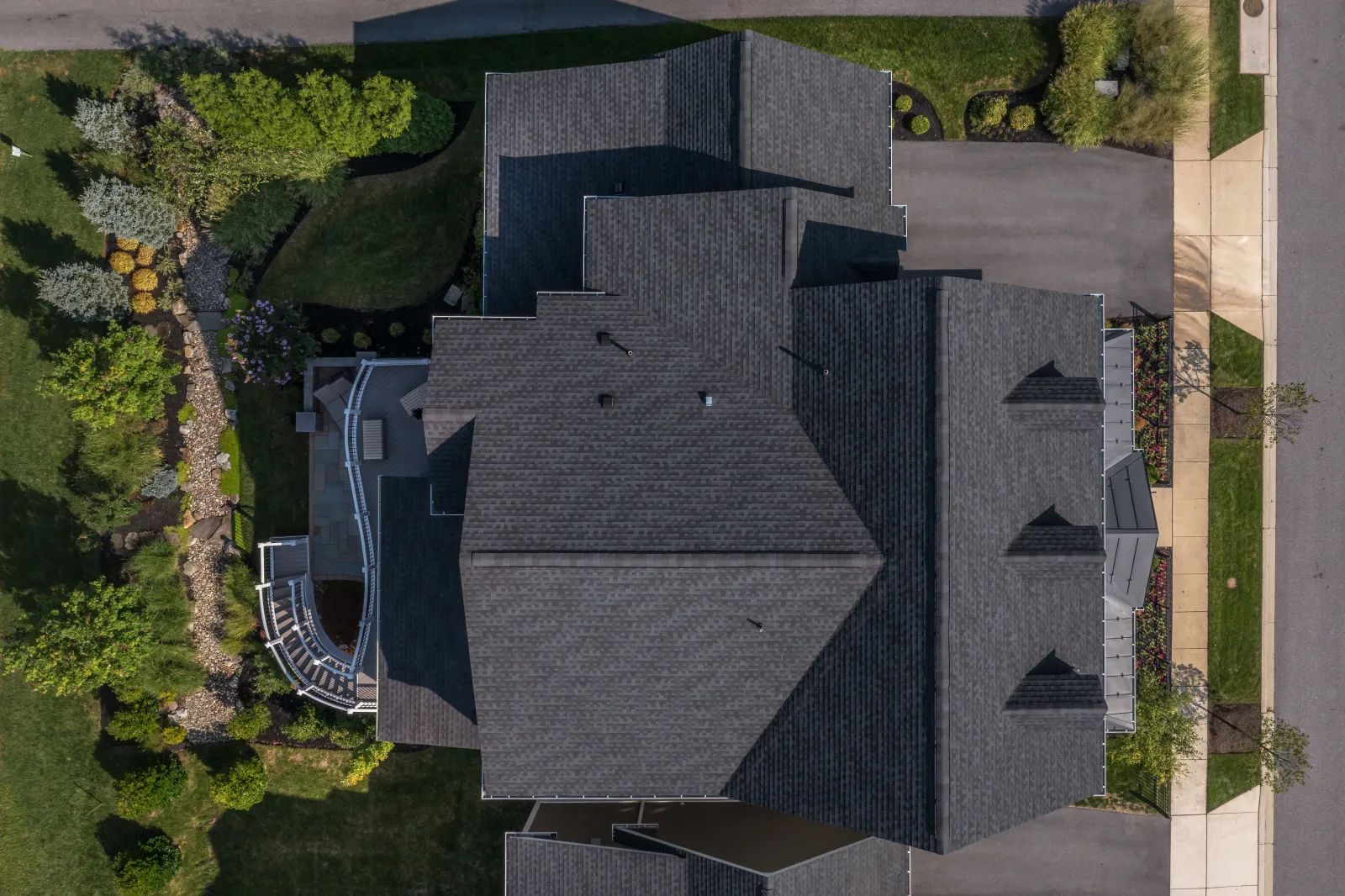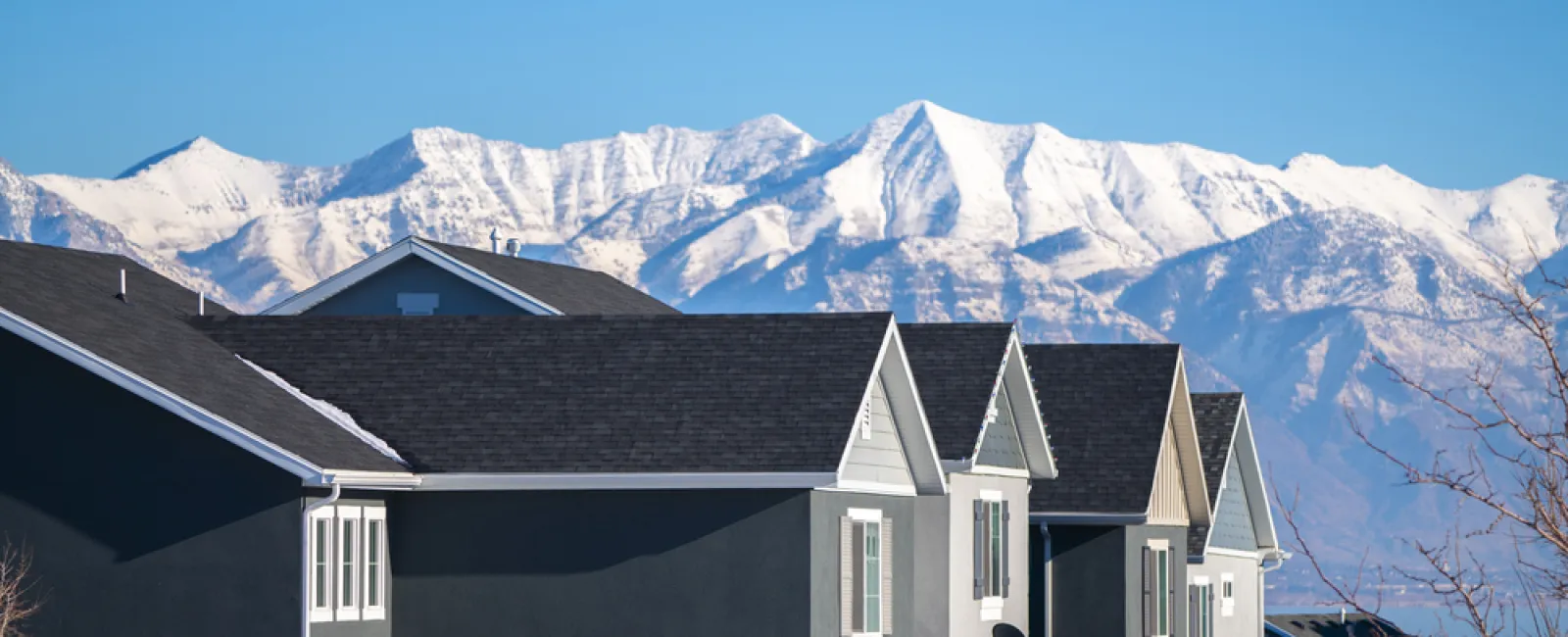The roof valley might be one of those parts of your roof you
rarely think about—until a problem arises. Often overlooked, the roof valley
plays a crucial role in directing water off your roof, preventing leaks and
structural damage. When your roof valley does its job, there's little to worry
about. When your roof valley fails, either due to improper installation or
inadequate maintenance, it can cause significant damage.
Types of Roof Valleys

Roof valleys are designed differently to cater to various roofing needs. The three main types are open valleys, closed valleys, and woven valleys. Open valleys have a visible strip of metal flashing between the shingles, providing excellent water protection and durability. Closed valleys, conversely, are covered by shingles, which gives them a seamless look. However, they require precise installation to prevent leaks. Woven valleys intertwine shingles from intersecting roof planes, creating a continuous and uniform appearance. While visually appealing, woven valleys might not be suitable for all roofing materials, as some can wear out quicker when woven. Additionally, precisely installing the weave is a significant challenge. It's important to remember that the roof valley sees a significant amount of wear and tear, since it is responsible for directing water away from the roof—your choices here are important.
Choosing the Right Type of Roof Valley
Open roof valleys provide for efficient water drainage, which limits the risk of water pooling (and subsequently weakening the materials below) and infiltrating the roof. If your home is prone to heavy rainfall, you may find that an open roof valley offers the most longevity and the quickest, easiest way for water to flow off of your roof. Many homeowners also discover that the maintenance for an open roof valley is easy, as debris is less likely to accumulate.
On the other hand, homeowners often find that closed roof valleys are more aesthetically appealing. The sudden break in shingles that an open valley provides can be visually jarring. The closed valley design may also give you more flexibility when it comes to choosing the right shingles for your roof.
Woven roof valleys may provide additional protection, thanks to the double layer of shingles. However, when installed improperly, a woven roof valley can become a significant liability to homeowners.
Why Roof Valleys Matter: Function and Protection
Roof valleys play an essential role in managing water drainage on your roof. When it rains, water flows into these valleys, which act like channels to guide the water off your roof and into the gutters. This efficient water management prevents pooling that could lead to leaks and water damage inside your home. By directing water away quickly, roof valleys help prevent mold growth, wood rot, and other issues that can compromise your home's structure.
Moreover, properly functioning roof valleys help preserve the
lifespan of your roof. By ensuring that water doesn't linger, they reduce the
risk of shingles or tiles deteriorating prematurely. This means fewer repairs
and less frequent replacements, saving you money in the long run. Roof valleys
are vital in maintaining the structural integrity of your roof and protecting
your home from the potentially costly consequences of water damage. Properly
maintained, they contribute significantly to your roof's overall durability and
effectiveness.
Signs of Roof Valley Problems
Recognizing signs of roof valley problems early can save you from costly repairs. One common indicator is water stains or damp patches on your ceiling or walls, especially near where the roof valley is located. These can signal a leak that needs immediate attention. Another warning sign is the presence of damaged or missing shingles in the valley area, which can expose your roof to water infiltration. If you spot rust, dents, or any form of damage on the metal flashing, it's a clear signal that the flashing might not be effectively preventing water from seeping through.
Additionally, finding granules from your shingles in the gutters
is a sign of wear and tear in the valley area. Shingles shedding their granules
could indicate they are deteriorating and may soon fail to protect your roof
adequately. Sometimes, you may also notice debris buildup in the roof valley,
like leaves or twigs, which can obstruct water flow and lead to pooling.
Regularly checking for these signs can help you catch issues early and address
them before they escalate into significant problems.
Maintenance Tips for Roof Valleys
Regular maintenance of roof valleys is essential to ensure they perform effectively and extend the lifespan of your roof. Start by inspecting your roof valleys at least twice a year and after any major storms. Look for any red flags indicating damage. These include missing or damaged shingles, rusted flashing, or buildup of leaves and debris. Removing leaves, twigs, and other debris from the valleys is crucial, as they can obstruct water flow and cause pooling.
If you spot any issues with the shingles or flashing, it's important to get them repaired promptly. Small repairs can often be handled quickly by a professional roofer, who can ensure everything is sealed and watertight. Additionally, keeping your gutters clean will help your roof valleys function properly by allowing water to drain away efficiently.
If you've spotted any issues with your roof valley, addressing these problems quickly can prevent them from becoming more expensive repairs. Call Master Roofers at (603) 623-4973 or contact us online to get a free quote. We serve homeowners throughout New Hampshire, Southern Maine, and the North Shore region of Massachusetts.
Click here for the main page and table of contents to
learn more about the anatomy of a roof.

